A Time Patrol movie
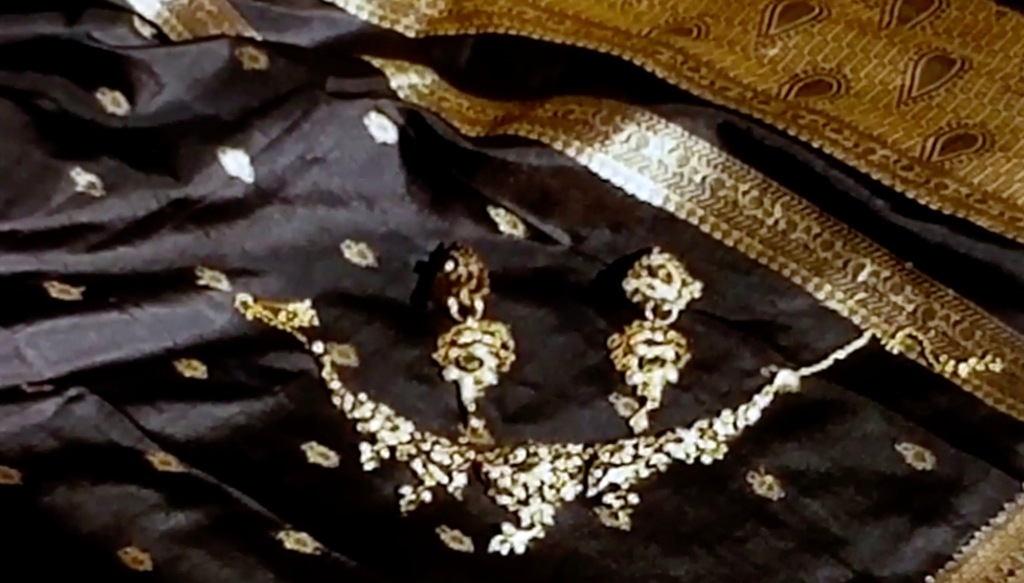
Karachi, Pakistan, 1954. Just to put ourselves in the mood, let’s start with my mother’s sarees and a necklace she bought at the Boree Bazaar.
We’ll drive the -then almost- empty streets of Karachi, carefully avoiding the bicycles and the horse-drawn carriages. Where are we going? To the Aga Khan’s Jubilée.
H.R.H. Prince Aga Khan, Sir Sultan Mahomed Shah (1877-1957) was the spiritual leader of the Ismaili branch of Shia Islam. Born in Karachi, he was a major figure of India’s fight for Independence, and a promoter of a separate Moslem nation. He was knighted by Queen Victoria in 1897. This was his Platinum Jubilée. Now dates? Kikipedia says he was born in 1877. Which would make more sense, but this panel said 1885. A good example of the difficulty of writing History.
The celebration was attended by crowds of his religious followers, the “Ismaelites”, and of course the high society of Karachi, including my parents, my mother taking this unique 8mm movie.
The purpose of the celebration was to weigh the Aga Khan in gold, diamonds, precious stones. A fortune obviously gathered by wealthy donators. In fact, my mother told me the Aga Khan himself provided most of the riches. The proceeds then went to welfare and development. One might say the Aga Khan was one of the first “humanitarians”, before the word was even coined.
The Aga Khan is on the right, his last wife is on the left, the Begum Om Habibeh (1906-2000). The Begum was French, a former Miss France, named Yvonne (Yvette) Blanche Labrousse before she converted to Islam and later married the Aga Khan. According to my parents she was a very nice and simple woman. I featured a photo of her in “My friend Max.”
This is the scale that served to measure the Aga Khan’s weight in gold, diamonds and precious stones. The current Aga Khan, Karim Aga Khan, the grandson, born in 1936, continues his grandfather’s spiritual and humanitarian work.
Let’s now move away from riches to poverty. A small fishermen’s village near Belagi on the coast of Karachi where my parents had a beach house… I know how it sounds. Weight in gold, diamonds, precious stones; beach house; fishermen. Just three parallel realities that met at some points. (Remember: parallel lines meet at infinity.)
An old fisherman on his donkey. (A sequence I particularly like)
Most women turned away from the camera.
Others did not, like this pretty young woman with her best jewels and her child. I always find such images very moving. If she is still alive, she’s pushing 90.
Fishing nets left to dry.
“Fresh fish, Memsahib? Caught it today.”
And the children, oh the children!
The children, never shy, some sporting their best clothes, even in the poorest village.
Rinsing the fishnets before putting them to dry.
The nets are carefully folded to be dropped on the ground for drying up till the next day. Another interesting sequence. You’ll see.
More women fleeing from the camera.
But not this one:
I’ve seen those movies countless times. More in detail as I digitised and edited the final cuts. I’ve always been drawn by the wonderful smile of this woman. (And her silver bracelets, wearing her dowry on her arms) She was probably not much older than my mother (who was 28 then). She lived a hard life, yet did not lose her smile or…
Or her love for her little boy.
Looking at the sorry state of the world today and the hatred spreading and spreading, I can’t help but regret times when a 28 year-old Memsahib could freely go around in shorts in a Pakistani fishermen’s village…
And could, with a smile, lift the veil of a simple fisherman’s wife. Neither fear nor hatred…
Scotty got a good load of Kryptonite on our last trip to Baluchistan. Mr Spock expressed his views that the transaction was, in his own words: “Highly irregular.” But this Time-Space shuttle is a bit old. Lousy Light-years per gallon, I’m afraid. It’s all right, hop on, back to another time and space… All aboard!
Safer mubarak. (Bon voyage.)
(c)Martin-Onraët & Equinoxio
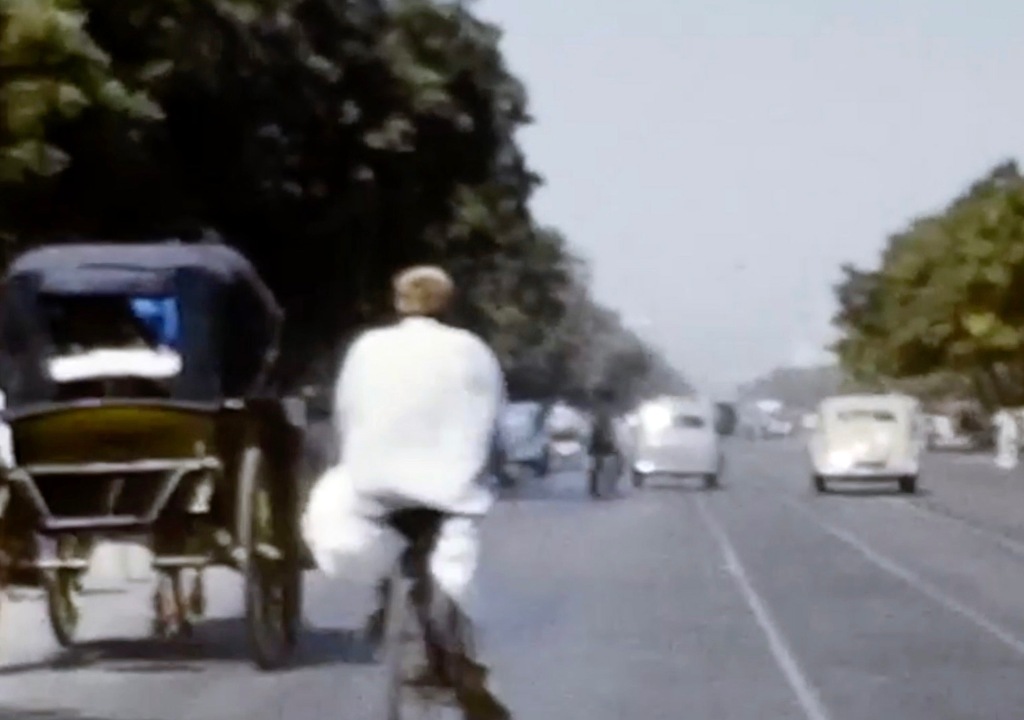


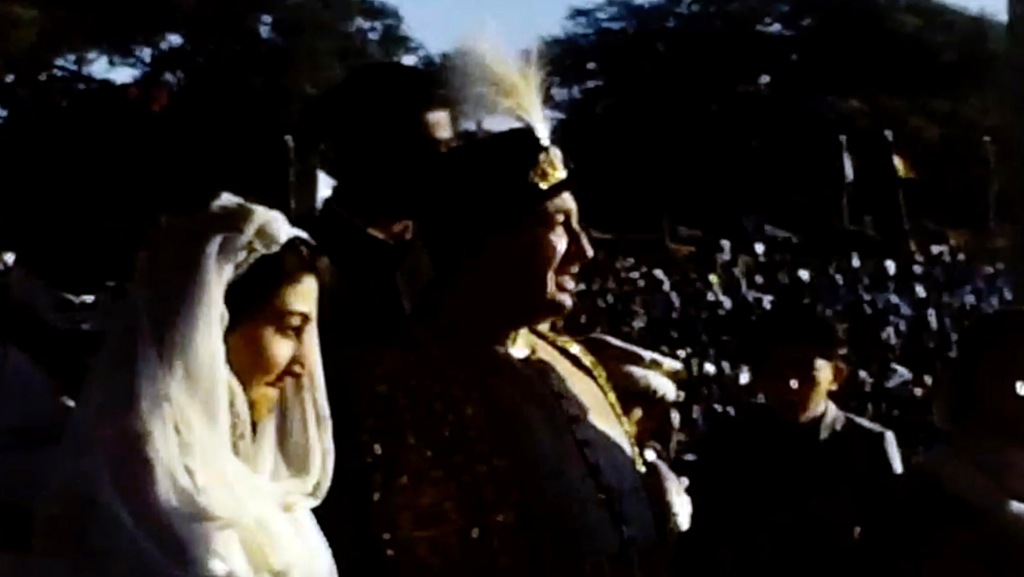

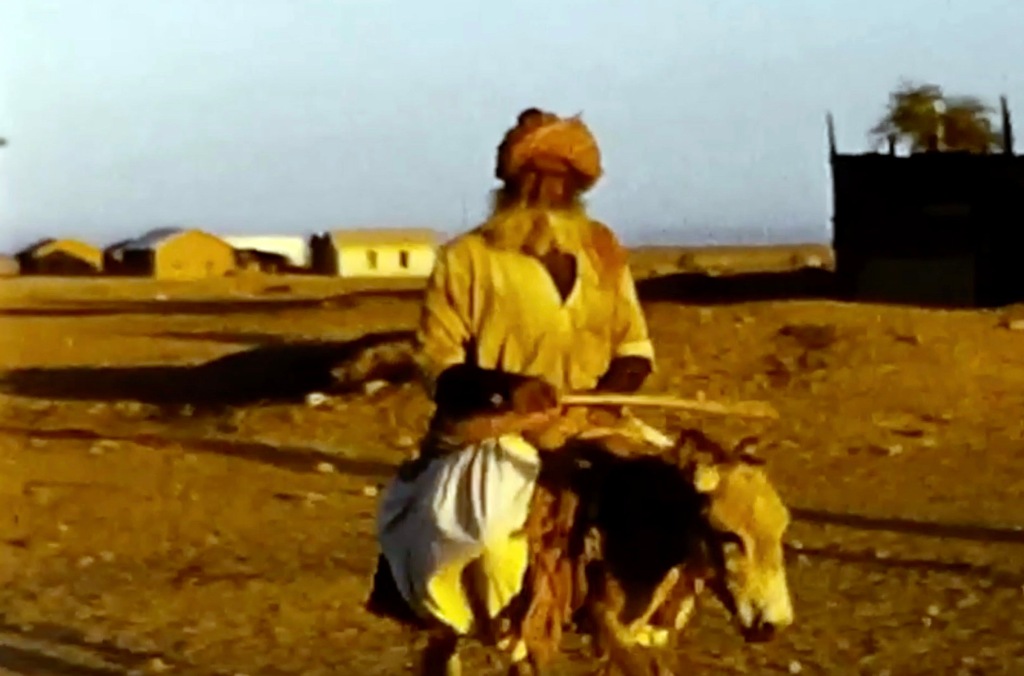
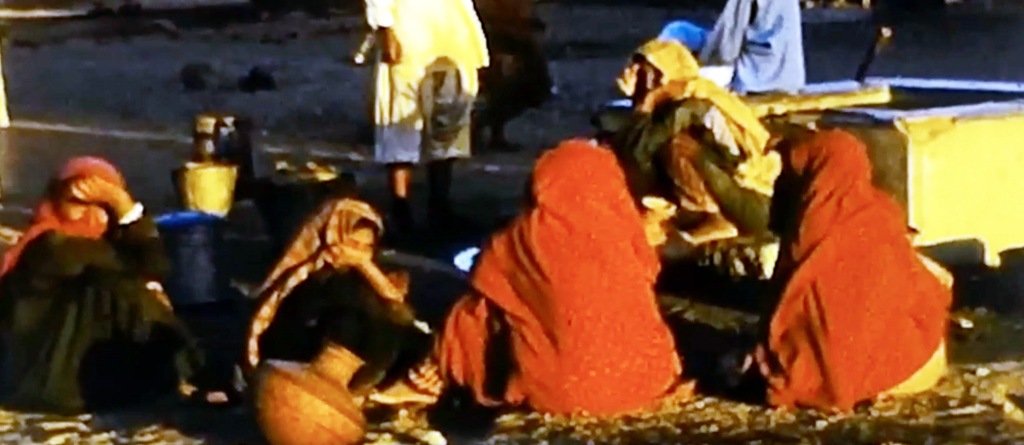
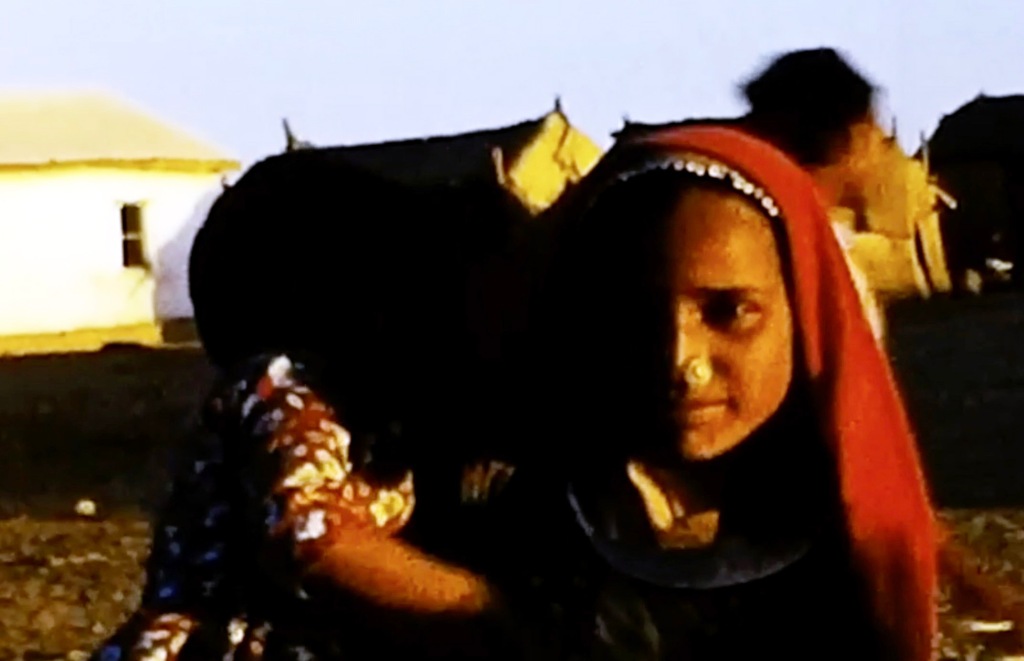


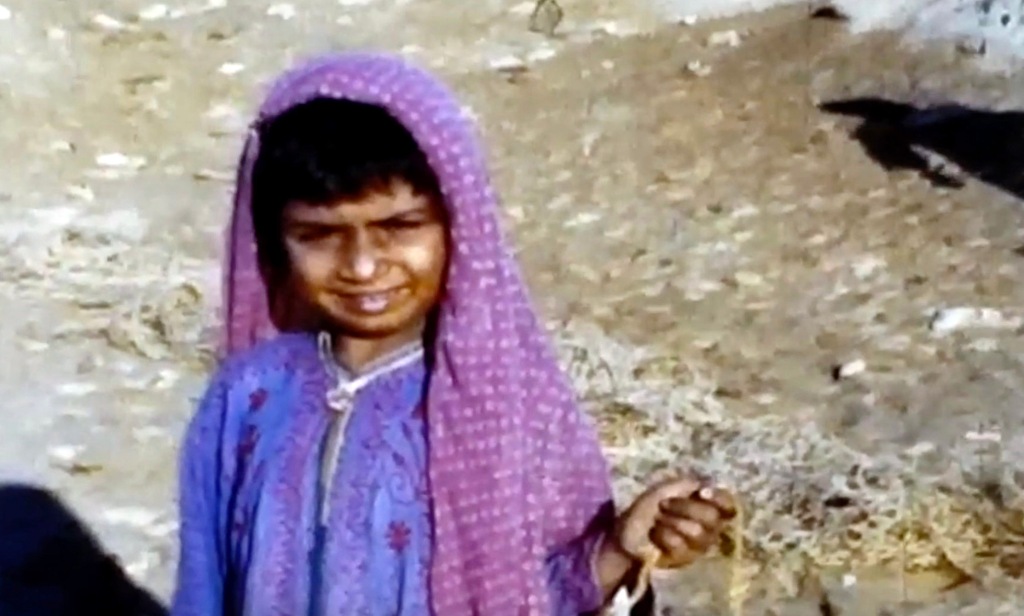
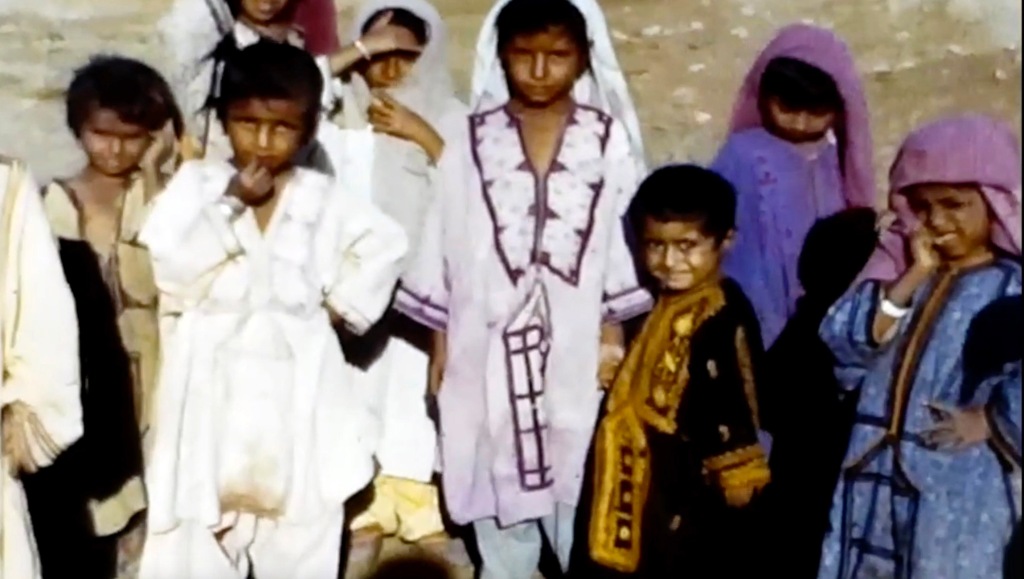
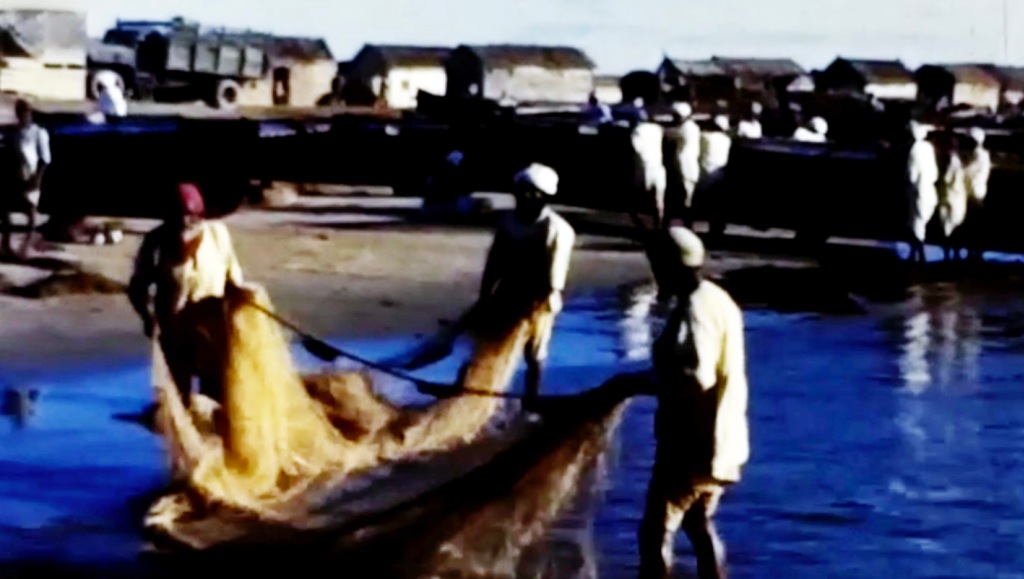
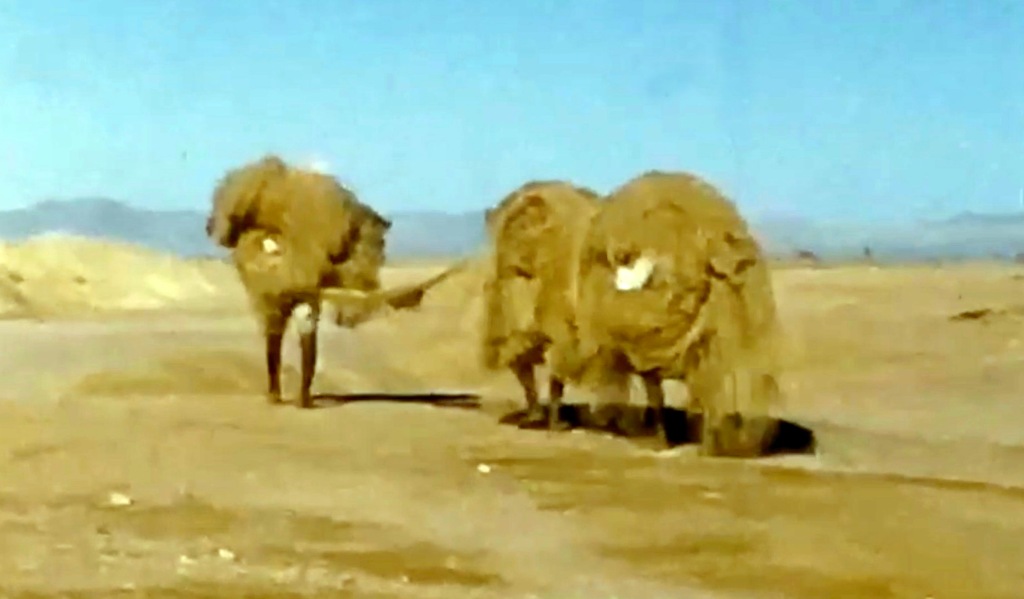
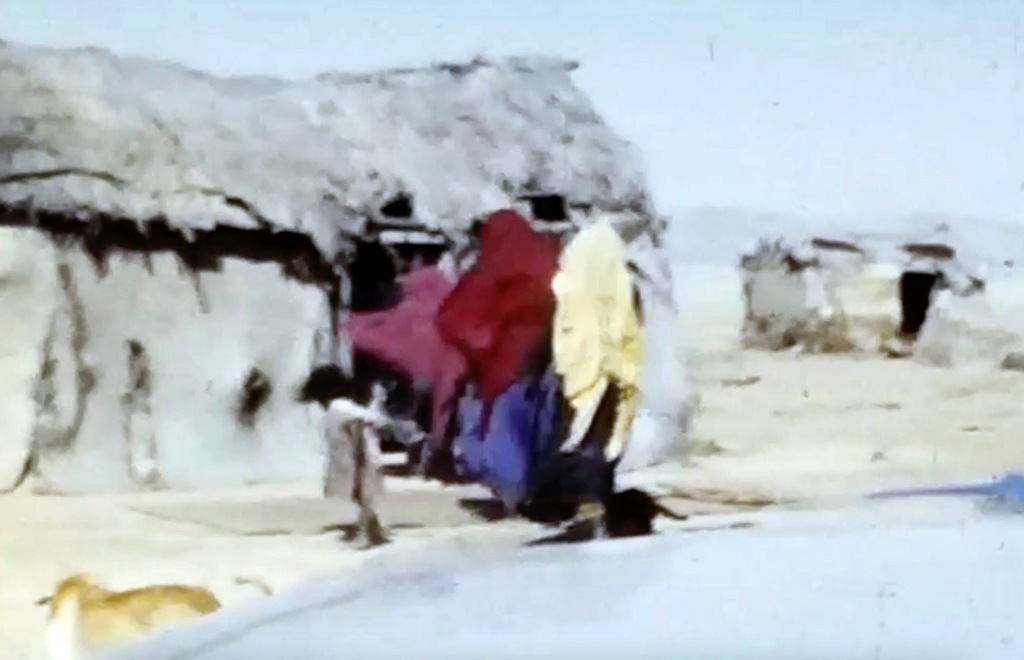
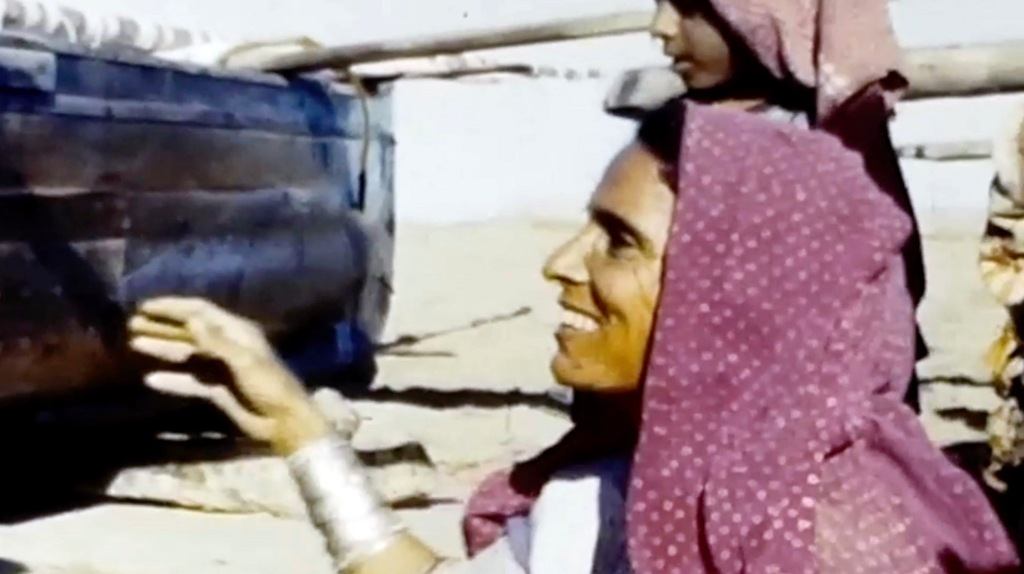
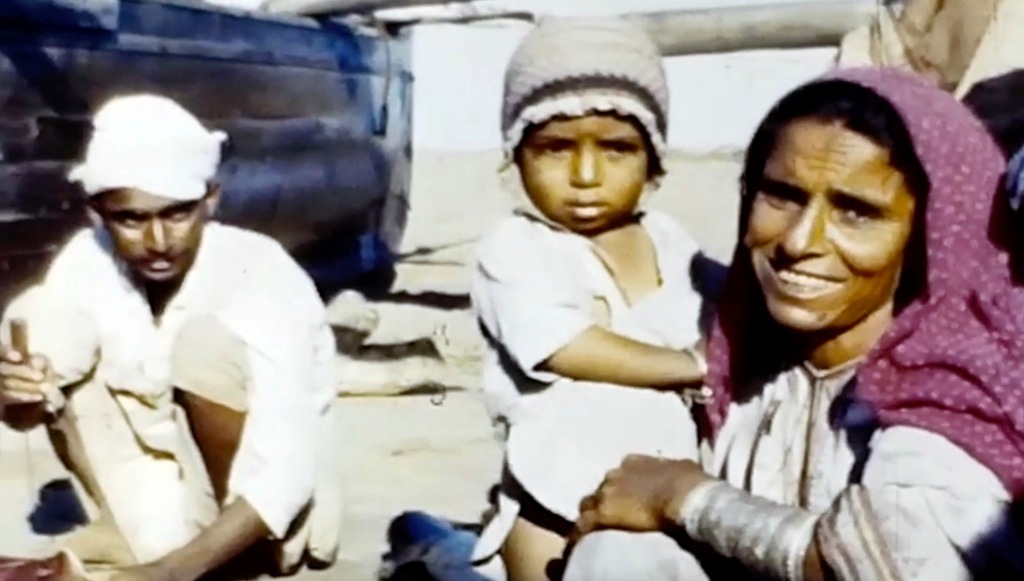
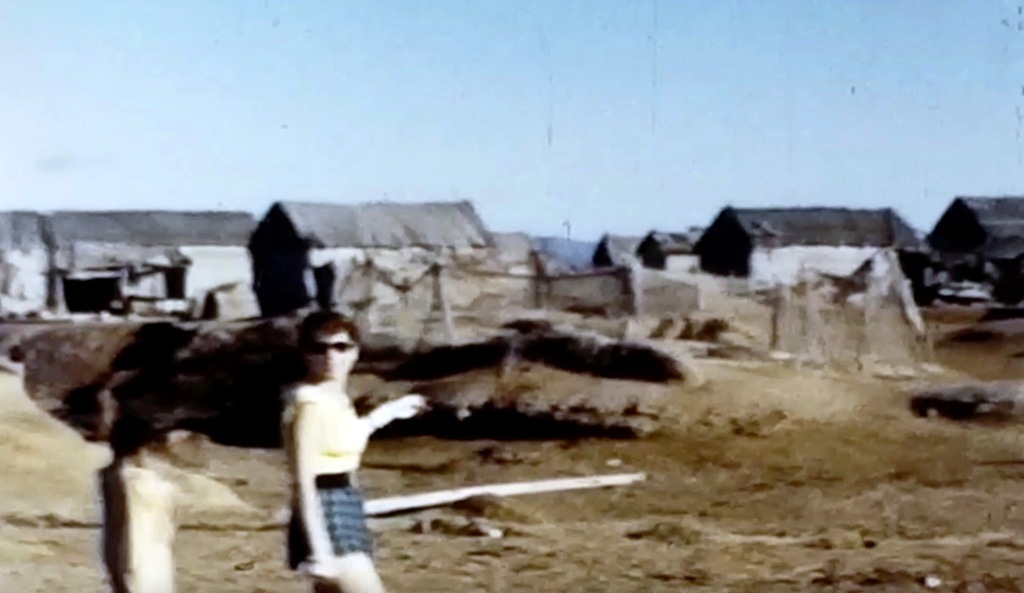
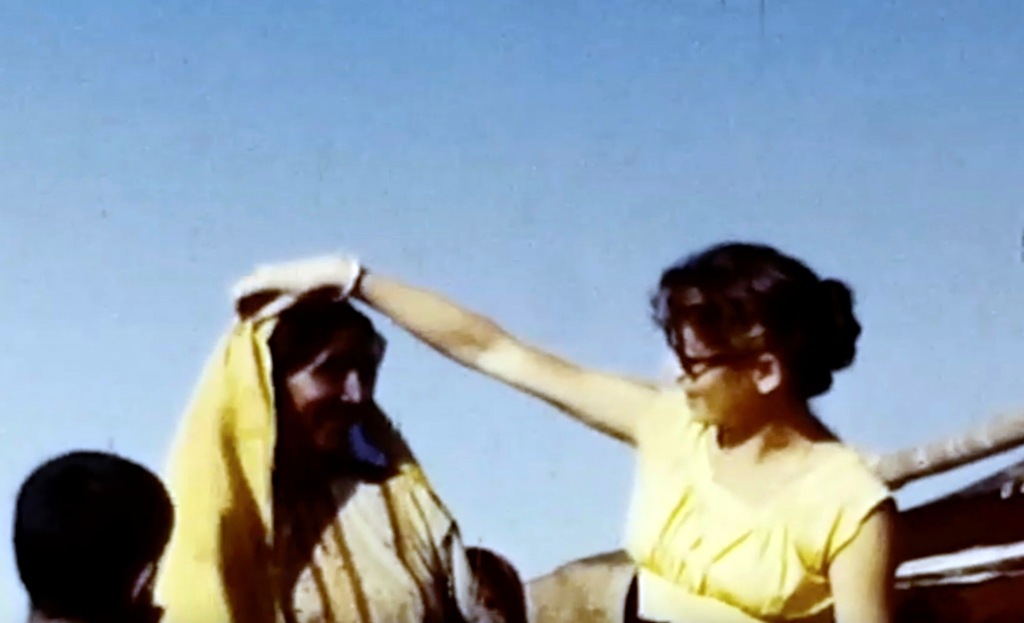



Very interesting and enjoyable. I can’t help wondering about the lady with the smile and silver bracelets. Was she a strong and independent woman and a bit rebellious given her time and place? I have no idea, but it made me stop and think.
Thank you David.
I don’t think she was rebellious. Not that easy in those circumstances. But she was certainly strong and smiling. Note: the arm and ankle bracelets, whatever jewels they could have, were probably part of their dowry, a sort of “back-up insurance” in case of illness, or major tragedy… The thing about those times and people too, was that my parents spoke fluent Urdu. So they would engage conversations with the locals. Some let my mother film them. Some did not. Anyway, times long gone.
Thank you for another interesting excursion on thee Time-Space Shuttle.
Thank you Liz. As I watch those old movies I realise how much the world has changed. It was possible to engage with the people then. Some would turn away. No problem. Some would engage in conversation. (My parents spoke fluent Urdu). Now? I don’t think it would be possible.
You’re welcome, Brian. It seems as a species we’ve become hardpressed to trust other people.
In other words we don’t trust anybody anymore?
It seems that way sometimes.
True. yet, we all still have a few people we can trust, don’t we?
Be good Liz.
Yes, we do, thankfully.
Fascinating. I’m sure there were probably divisions brewing back then but at least foreigners could travel safely.
Indeed. Safety was never an issue. The major reason was that they had obtained their Independence after years of struggle, but there was no resentment. Another factor which I have experienced later myself, my parents spoke Urdu fluently. If you speak the local language, it’s much easier to establish contact. It means you have made the effort to learn the language. And that is -still- much appreciated.
Another intriguing time warp
Thank you Derrick. The more I see those old movies before the final posting, the more I realise how” distant” it is. My mother could not go around there in shorts filming everybody. (At least I don’t think so…)
All well I hope?
Thanks very much, Brian. I will answer questions after the biopsy, when I know what is to be expected.
👍🏻
Very interesting footage, as always. At the time of the jubilee Pakistan was only 7 years independent, I read. Weighing you weight in gold and juwels, that is something from fairy tales of a thousand and one nights. Perhaps a bit odd when poverty makes skinny people one would wish the Khan to be as obese as possible. 🙂 But I understand that the intentions were good. The bleak, barren fishermans village is of a stark contrast. But the images are wonderful, as indeed is the smile of the young mother. I’m aboard Brian, let’s go to the spot were parallel lines meet.
Thank you Peter. Yes, it’s a fairy tale story. and odd too. When I put the final touch to the film before posting I wondered whether to cut in two. Too much contrast. But I respected my mother’s decision. She’d put the two segments together…
Good to have you on board, vriend.
Tot siens.
Thank goodness for Scotty – we all need a reminder of less hatred.
Old images always make me, too, count how old they would be now. The little kids, probably gone, or old. Not the same anymore. Would they recognise themselves? For the viewer of the images, they are frozen at that age forever.
Yes, as hatred grows and grows, those old images sometimes help remember it is not inveitable. (Having said that the massacres along the border during the Partition were not that distant in time.
Interesting that you should count time too. Those frozen -moving-images I also find very moving. At one fraction of second, people long gone have cut a stream of photons and made a mark on a film… Amazing. (One of the many reasons I post those old movies too.)
Bon week-end “Lumi.”
Like the “I was here” writings on a wall.
Bon week-end! (It’s Midsummer here, but we don’t have a lakeside cottage like all the other Finns. The downsides of having a rootless past. The city is deserted, everyone else is in the countryside.)
Desert cities are full of charm… 😉
Hah!
Wonderful share, Brieuc. That first woman in the fishing village is so beautiful! I love how the kids all stop and want to be in the movie 🙂 And yes, that woman’s smile is just so full of love.
Merci pour ce tour!
The very first young woman? Yes, she was very pretty.
And the other’s smile is priceless.
Yes and yes!!
I just love these videos of long ago, thank you so much for sharing!
Thank you Tiffany. Glad to share, always.
So interesting. The world is so different now. Another wonderful post. Thank you.
Yes, the world is very different now. I’ve seen the end of a couple of worlds. I hope I(we) don’t see the end of this one… Happy week-end.
Hope you have a good week-end as well. You should be lecturing on the things you have seen first hand. I’m sure people would love to hear about the life you’ve lived.
Thank you. Lecturing? I’ve done a lot of “lecturing” on Marketing. As for my experiences, I have such a different perspective, I’m not sure anybody would really care to listen.
And I’m happy sharing those experiences with you and the WP “crowd”. 😉
The woman with the bracelets does indeed have a winning smile. Many of these scenes are irresistible to me. What a treasure to have them on film.
She does doesn’t she?
And yes, it’s a treasure. Bits of history preserved. I must say it makes me very happy to share those. (I was raised in that “atmosphere.” A long gone world.)
Happy week-end.
What a fascinating life you have led. I love the way your mother interacted and was accepted. You’re right. Mutual respect that is missing today.
I was lucky. Not many of us left, I think. 😉
Yes, that interaction was precious. She wasn’t scared of anything. She’d go to the Main Karachi Bazaar alone, an unveiled Memsahib. Nobody objected. Mutual respect indeed… Hopefully it will come back…
The Aga Khan’s jubilee was interesting but I confess I enjoyed my visit to the fishing village much more, despite the poverty. The people seem more ‘real’ and engaging, even the women who didn’t like to be photographed. On the dates confusion, surely 1885 would be the date he came to the throne, if a jubilee was being celebrated rather than a birthday? He would have been young but that’s not unheard-of. And yes, Wikipedia (https://en.wikipedia.org/wiki/Aga_Khan_III#Career) confirms my hunch: ‘In 1885, at the age of seven, he succeeded his father as Imam of the Shi’a Isma’ili Muslims.’
Of course, of course. I hadn’t thought of that. I had checked wikipedia, skimmed as often, but the dates didn’t check. Thanks for the detail. It did bother me a bit. Facts are facts and should be nurtured…
(And yes, the fishing village is much more interesting…)
Having had our late Queen’s jubilee celebrations quite recently I was probably more aware than you would be that these commemorate years on the throne rather than years of life! And I’m with you on facts 😀
I thought you would.
And with you all the way…
Cheers.
Hi Brian, what an amazing experience. Thank you for sharing about this event and the pictures. I’ll watch the video later as I am at the hospital (again 🌈)
Take your time… I hope you come of hospital soon. (You or your son?)
Very best wishes of prompt recovery.
Thank you. This time, it was my elderly aunt who is sick. She has a kidney infection and stones. The pain is terrible. I stayed with her all day and she is now safely in a hospital ward on intravenous antibiotics and painkillers. She’s 89 so I hope she’ll recover
Sorry to hear that. That can be very painful. Now if she’s on antibiotics, she should be all right. The thing with elderly is to release them quickly, so they can recover at home. Very best wishes.
Yes, I agree and thank you 🙏
Fabulous photos and video, Brian! The woman’s smile at the end of the video is infectious. It never ceases to amaze me how the poorest of people (especially children) seem to always smile. Some of your photos reminded me of Rajasthan in 1985 and a couple are very similar to mine. 😉
The rich tend to frown, right? 😉
What I’ve heard or seen from Rajasthan it seems they’ve kept a lot of traditions. And Rajasthan is not very far from the Pakistani coast.
You travels back into history are always very interesting and charming.
At a time I started to read 1001 nights, the very old version, and to me it seems that at that time Muslims, Jews and Christians were equally accepted in the Osman Empire. The fanatism came later.
Glad you like Time Patrol. It’s fun.
Fanatism I guess goes up and down. Now we’re up. I hope it still goes down in our lifetime.
Yes, let’s hope so!
Merci pour ce nouveau voyage très enrichissant.
Bonne journée Brieuc
Bises
Toujours un plaisir de t’avoir à bord “ma grande”. Bonne soirée et bises aussi.
Bonne journée Brieuc
Bises
🤗